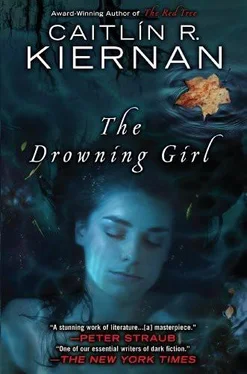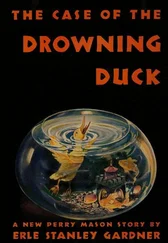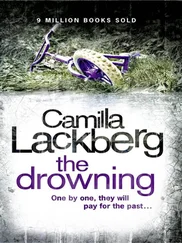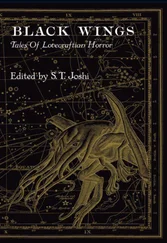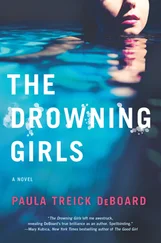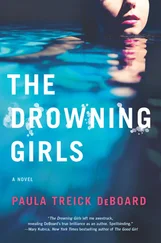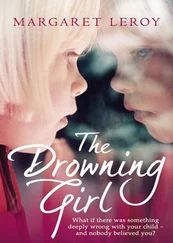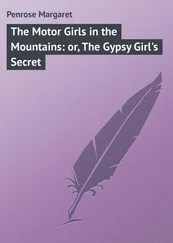Caitlín Kiernan - The Drowning Girl
Здесь есть возможность читать онлайн «Caitlín Kiernan - The Drowning Girl» весь текст электронной книги совершенно бесплатно (целиком полную версию без сокращений). В некоторых случаях можно слушать аудио, скачать через торрент в формате fb2 и присутствует краткое содержание. Год выпуска: 2012, ISBN: 2012, Издательство: Roc / New American Library, Жанр: Фэнтези, на английском языке. Описание произведения, (предисловие) а так же отзывы посетителей доступны на портале библиотеки ЛибКат.
- Название:The Drowning Girl
- Автор:
- Издательство:Roc / New American Library
- Жанр:
- Год:2012
- ISBN:978-0-451-46416-3
- Рейтинг книги:5 / 5. Голосов: 1
-
Избранное:Добавить в избранное
- Отзывы:
-
Ваша оценка:
- 100
- 1
- 2
- 3
- 4
- 5
The Drowning Girl: краткое содержание, описание и аннотация
Предлагаем к чтению аннотацию, описание, краткое содержание или предисловие (зависит от того, что написал сам автор книги «The Drowning Girl»). Если вы не нашли необходимую информацию о книге — напишите в комментариях, мы постараемся отыскать её.
The Drowning Girl — читать онлайн бесплатно полную книгу (весь текст) целиком
Ниже представлен текст книги, разбитый по страницам. Система сохранения места последней прочитанной страницы, позволяет с удобством читать онлайн бесплатно книгу «The Drowning Girl», без необходимости каждый раз заново искать на чём Вы остановились. Поставьте закладку, и сможете в любой момент перейти на страницу, на которой закончили чтение.
Интервал:
Закладка:
NOVEMBER 27, 2010
“Whatever it was, or wasn’t, it’s done,” I typed, “and you’ve written it down for me. You will always be haunted, but it’s done. Thank you. You can go now.”
Imp typed.
I typed.
JANUARY 18, 2011
Last night, I looked out the window and saw a red woman walking in the snow. I mean, she was wearing a red dress. But it wasn’t her. Abalyn saw the woman, too, and it wasn’t her. I think it’s going to snow all winter.
JANUARY 27, 2011
I stumbled across this on the internet this morning. I wasn’t looking for it. No, maybe I was. I still have my files, and I’ll put the printout with everything else about Perrault. This much I will type:
[C]ertainly, far stranger things have been suggested regarding both his life and his works. And given the particulars of his short career, his involvement in the occult, and his penchant for cryptic affectations, it does not seem—to this author—so outlandish to ascribe to Albert Perrault a morbid sort of prescience or to believe that his presentation of
Last Drink Bird Head
upon the eve of his fatal motorcycle accident on the rue Cuvier was a carefully orchestrated move, designed to preserve his mystique
ad finem
. Indeed, it almost seems outlandish to believe otherwise.
As to the painting itself (currently on loan to the Musée national d’art moderne),
Last Drink Bird Head
is one of Perrault’s largest and most thematically oblique canvases. After his disappointing experiments with sculpture and multimedia, it harks back to the paintings that heralded his ascent almost a decade ago. Here we have, once again, his “retro-expressionist-impressionist” vision and also a clear return to his earlier obsession with mythology.
A lone figure stands on a barren hilltop, silhouetted against a writhing night sky. However, this sky does not writhe with stars or moonlight, as in Van Gogh’s
Starry Night
, but rather here the very
fabric
of the sky writhes. The canvas itself seems to convulse. The blackness of a firmament which might well reflect Perrault’s conception of an antipathetic cosmos, and might also be read as the projection of the painting’s central figure and, by extension, the artist’s own psyche. There is but a single crimson dab of light in all that black, contorted sky (recalling his earlier
Fecunda ratis
), and it seems more like a baleful eye than any ordinary celestial body. The distinctive shape and thickness of the brushstrokes have rendered this sky a violent thing, and I have found that it’s difficult not to view the brushstrokes as the corridors of a sort of madman’s maze, leading round and round and, ultimately, nowhere at all.
And if the sky of
Last Drink Bird Head
could be said to form a labyrinth, then the figure dominating the foreground might fairly be construed as its inevitable “minotaur”—that is, a malformed chimera trapped forever within its looping confines. The figure has previously been described by one prominent reviewer as representing the falcon-headed Egyptian sky god Horus (or Nekheny). Yet it seems clear to me that Perrault’s Bird Head avatar cannot accurately be described as “falcon-headed.” Rather, the profile presented—a small skull and long, slender, decurved bill—is more strongly reminiscent of an ibis. This, then, brings to mind a different Egyptian deity entirely—Thoth, scribe of the gods and intermediator between forces of good and evil.
In its left hand, the figure clutches a book, and on the book’s spine we may clearly discern three letters, presumably a portion of the title—LEV. I cannot help but note reports which surfaced shortly after Perrault’s death that he’d recently begun correspondence with a surviving member of the late Jacova Angevine’s Open Door of Night “suicide cult,” a woman referred to in his correspondence simply as EMC. Since Angevine’s infamous book,
Waking Leviathan
, is known to have been present in Albert Perrault’s library…
Excerpt from
Gilded Thomas Art Review
(Vol. 31, No. 7, Fall 2006; Minneapolis, MN)
This painting was not included in the exhibition at the Bell Gallery in 2008. I thought maybe I left before I saw it, as I left in such a state. But I consulted the gallery, and a catalog of the exhibition. The painting wasn’t there. I assume it’s still in France. But EMC, supposedly a survivor of the mass drownings off Moss Landing? Can there be any doubt who this correspondent was? He didn’t know, did he? He didn’t know.
FEBRUARY 7, 2011
And am I born to die
To lay this body down
And as my trembling spirit fly
Into a world unknown
A land of deepest shade
Unpierced by human thought
The dreary regions of the dead
Where all things are forgot
“IDUMEA,” CHARLES WESLEY, 1793
FEBRUARY 10, 2011
Yesterday, at the Athenaeum, I was asked, “Are you still interested in Phillip Saltonstall?” By the librarian, I mean. The one who asked me two years ago if I knew some of his letters were at the John Hay Library.
“No,” I said. But then I said, “Yes, I am,” which made her look at me that way . But the expression passed quickly. She leaned close and whispered. It seemed conspiratorial, the whisper.
“Then you’re not gonna believe this,” she said. “You were especially interested in that one painting, right?”
“ The Drowning Girl, ” I said, not wanting to say that at all, but what else could I have said?
She produced a very large book, the sort people call “coffee-table books.” It was titled Masters of Symbolism . She opened it to pages 156–157, and there, on 156 (the left side), was The Drowning Girl, and on page 157, there was another of Saltonstall’s paintings reproduced. Each filled almost an entire glossy page. The second painting is titled Girl on a River , and the book says it was painted in 1870, two years after The Drowning Girl . In most respects, the two are almost identical. But they are very, very different, and Girl on a River , at first I thought it was the more terrible of the two to see. At first, I almost gathered up my things and ran. After seeing it, I mean. The same girl stands in the same pool; more or less they are the same. Except the girl is not looking over her right shoulder, but is shown in left profile. She is gazing down at a black thing, almost like an immense serpent, half in and half out of the water. It’s wrapped itself about her calves and seems to be slithering from the pool into the grass. She appears not the least bit alarmed. Curious, I think, maybe. Almost bemused. Abalyn would say that’s a word that no one uses anymore, but she sort of looks that way, bemused . The thing looks slippery, and is absolutely black.
In 1897, Saltonstall wrote to Mary Farnum:
“It was then that a pitchy shape leapt up from the river. I know that is a vague description, but I can do no better. It was visible only for an instant, and it never coalesced into anything more distinct. Still, it left me with the disquieting impression that I’d beheld not any manner of fish, but possibly a great serpent, thick around as a telegraph pole and greater in size than any serpent I’d imagined lived anywhere outside the African or Amazonian tropics. Not a genuine serpent, but that’s the nearest comparison I can draw, if I attempt to fashion of it anything more substantial than the shadows beneath the maples.”
The man who wrote Masters of Symbolism referred to Girl on a River as a “lost painting.” If it really was ever lost, then it was found three years ago, in the collection of the Hartnell College Gallery in Salinas, California. The author also notes that the painting was donated “by the estate of Theodore Angevine.” Father of Jacova. Prophet from Salinas. Her father taught comparative literature, and he wrote mystery novels that I don’t think were ever very popular.
Читать дальшеИнтервал:
Закладка:
Похожие книги на «The Drowning Girl»
Представляем Вашему вниманию похожие книги на «The Drowning Girl» списком для выбора. Мы отобрали схожую по названию и смыслу литературу в надежде предоставить читателям больше вариантов отыскать новые, интересные, ещё непрочитанные произведения.
Обсуждение, отзывы о книге «The Drowning Girl» и просто собственные мнения читателей. Оставьте ваши комментарии, напишите, что Вы думаете о произведении, его смысле или главных героях. Укажите что конкретно понравилось, а что нет, и почему Вы так считаете.
